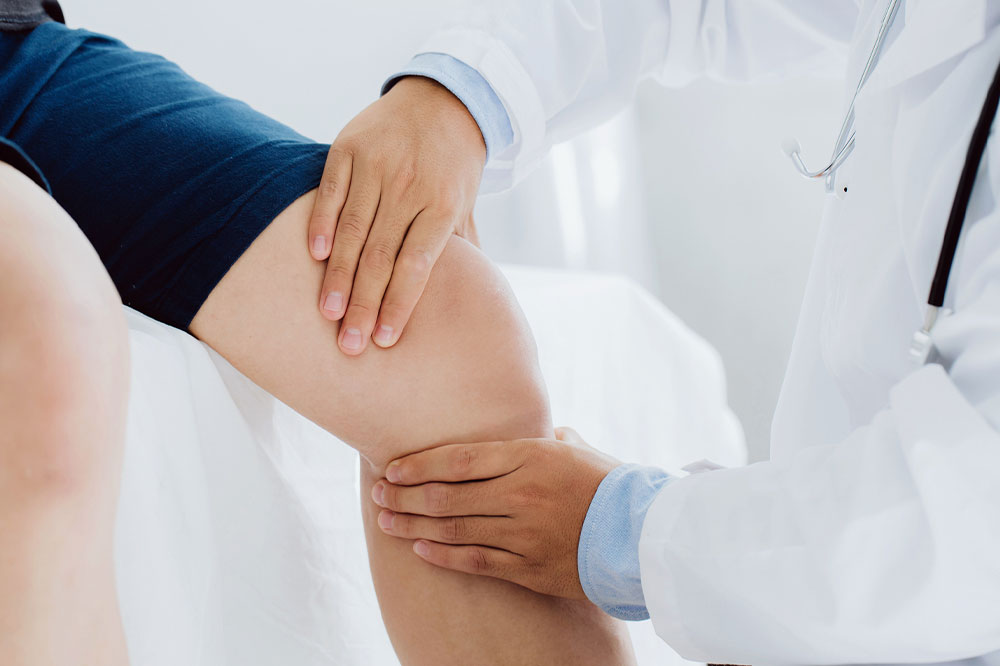5 Conditions That Can Cause Osteoporosis

An adult has 206 bones compared to an infant’s 306; as one grows, the bone fuses, and the bone tissues constantly break down and rebuild. The length of bones stops growing between the ages of 16 and 18, but bone density continues growing until age 35. Individuals begin to lose bone tissue between the ages of 35 and 40, but this can be hastened by conditions like osteoporosis, which leads to drastic bone loss.
What is osteoporosis?
Bones have a thick outer shell and an inner mesh resembling a honeycomb. The mesh contains proteins and minerals like collagen and calcium. Our body needs minerals like phosphorus and magnesium to build new bones regularly. As we age, if our body loses more bones than it can produce, it cumulatively results in bone loss. This condition is called osteoporosis, which develops and progresses slowly over many years.
The bone’s outer shell and honeycomb-like mesh gradually become thinner when osteoporosis happens. The bone becomes weak, putting the person at a high risk of bone pain and fractures. Osteoporosis does not have any specific symptoms. Most men and women may not know they have had osteoporosis until the bone pain and stiffness become too intense or if they suffer a sudden fracture. Fractures of the hip, spine, and wrist are the most common impact of osteoporosis. Weak bones can break at the slightest movement and cause fractures when the person falls. In severe cases of osteoporosis, even a sneeze or a cough can cause a fracture.
Five diseases that cause osteoporosis
Whatever the cause, bone loss can only be delayed but not reversed. Genetic, autoimmune, hormonal, liver and allergic, psychiatric, and neurological disorders can cause osteoporosis. Five such diseases are:
Cystic fibrosis
Cystic fibrosis is an inherited and life-threatening disease that causes thick sticky mucus in the lungs, pancreas, and internal organs. It leads to low bone minerals, causing the holes in the bones to become big, making them weak and brittle. The condition is a leading cause of bone loss and fractures. Doctors have yet to identify a cure for cystic fibrosis and use a combination of prescription treatments, anti-inflammatory treatments, antibiotics, and gene therapy to manage it.
Anorexia nervosa
Anorexia nervosa is an eating disorder where one restricts their food intake, fearing they may become overweight. They may be very thin and underweight, but they are still anxious and irrational fear about putting on weight. They tend to avoid meals and eat very little. The lack of proper nutrition can affect hormone production, irregular menstruation, low estrogen production, and excessive production of cortisol that triggers bone loss. Each of these factors impacts affects bone growth. Both men and women can develop anorexia nervosa and osteoporosis due to malnutrition and low bone density.
Doctors treat anorexia nervosa with a combination of healthy foods, prescription treatment, nutritional counseling, group therapy, and, if necessary, hospitalization.
Celiac disease
Celiac disease affects the intestines and is an autoimmune condition where our body cannot absorb or tolerate gluten. When the immune system senses gluten, it starts attacking the small intestine, damaging the lining. The small intestine then becomes unable to absorb nutrients. Without adequate nutrition, a person with Celiac disease may become malnourished and have consequences like anemia, weight loss, delayed growth, or lack of adequate growth, resulting in a small frame. Osteoporosis and consequent bone loss and loss of mass bone are common complications of Celiac disease. A gluten-free food regime is the best treatment for this condition.
Rheumatoid arthritis
Rheumatoid arthritis is a chronic condition. It is an autoimmune disease that damages the connective tissue in the joints. As the disease progresses, it results in joint stiffness and the weakening of bone tissue around the affected joints. Osteoporosis is a co-morbid condition of rheumatoid arthritis. The treatments for RA can trigger bone loss, pain and joint stiffness, making mobility difficult, and the resultant inactivity can trigger fractures around the joints. There is no cure yet for RA, and doctors use a combination of prescription treatments, nutrition, physical therapy and frequent screening to arrest its progression.
Chronic renal disease
If a person has chronic renal disease, their kidneys cannot flush extra minerals out of their system, resulting in the build-up of phosphorous and calcium in their blood. Excess phosphorous causes the calcium in the bones to mix with blood. The kidneys are also unable to convert food and sunlight into vitamin D, causing its deficiency. Cumulatively the bone begins to become weaker, leading to osteoporosis.
Doctors treat chronic renal disease with a combination of prescription treatments and low-phosphorous and low-calcium meal plans. Doctors may also prescribe dialysis for people with advanced renal disease.
Other risk factors for osteoporosis
Aside from diseases, there are several reasons why one can develop osteoporosis. Though aging is the primary cause of the condition, not every person will be affected by it. Some natural, lifestyle and other health factors significantly increase the chances of osteoporosis, like:
Age
Men and women above 30 are at a higher risk.
Gender
Women are at a higher risk of developing osteoporosis than men.
Menopause
Estrogen promotes the growth of osteoblasts, cells that produce bone. After menopause, the production of estrogen and osteoblasts reduce, resulting in gradual bone loss. Menopausal women are at a higher risk for developing osteoporosis.
Body mass and build
A person with a thin frame and low body weight is at higher risk than people with larger frames.
Family history
If any of your older family members have a history of hunched shoulders or frequent spine or hip fractures, you, too, are at a higher risk of the condition.
Prescription treatment
Long-term use of certain prescription treatments like steroids, immunosuppressants, and anticoagulants can lead to osteoporosis. Treatments for managing epilepsy and thyroid problems can also increase the risk of bone loss.
Nutritional deficiencies
Malnutrition and imbalances in calcium, magnesium, phosphorous, and vitamin D levels can also increase the risk of bone loss.
Lifestyle
Long-term use of specific addictive products, lack of physical activity, and sedentary lifestyle increase the risk of bone loss and fractures.
Underlying diseases and disorders
As seen above, diseases like chronic liver disease, metabolic disorders, certain cancers, rheumatologic diseases, and diabetes can also lead to osteoporosis.

